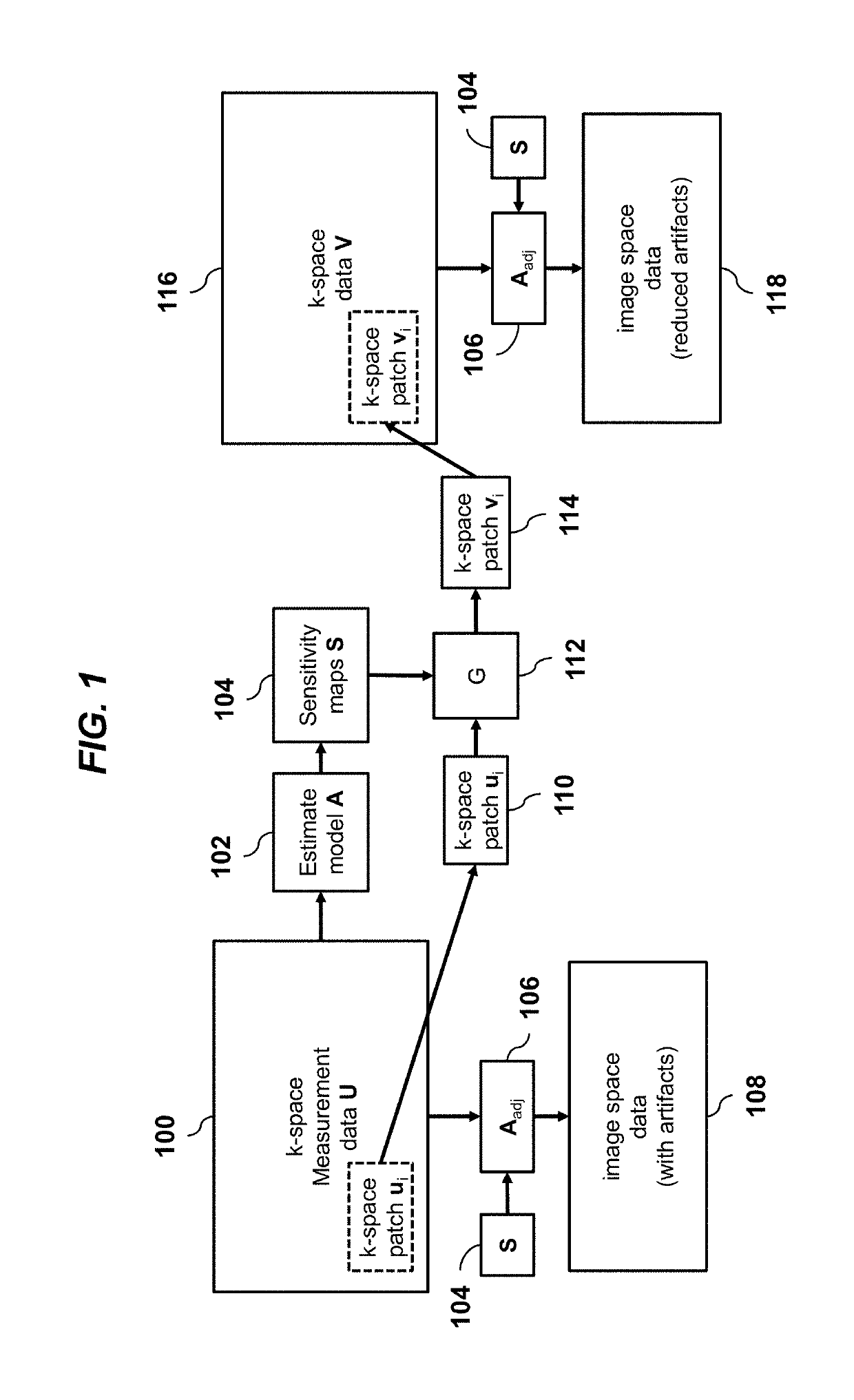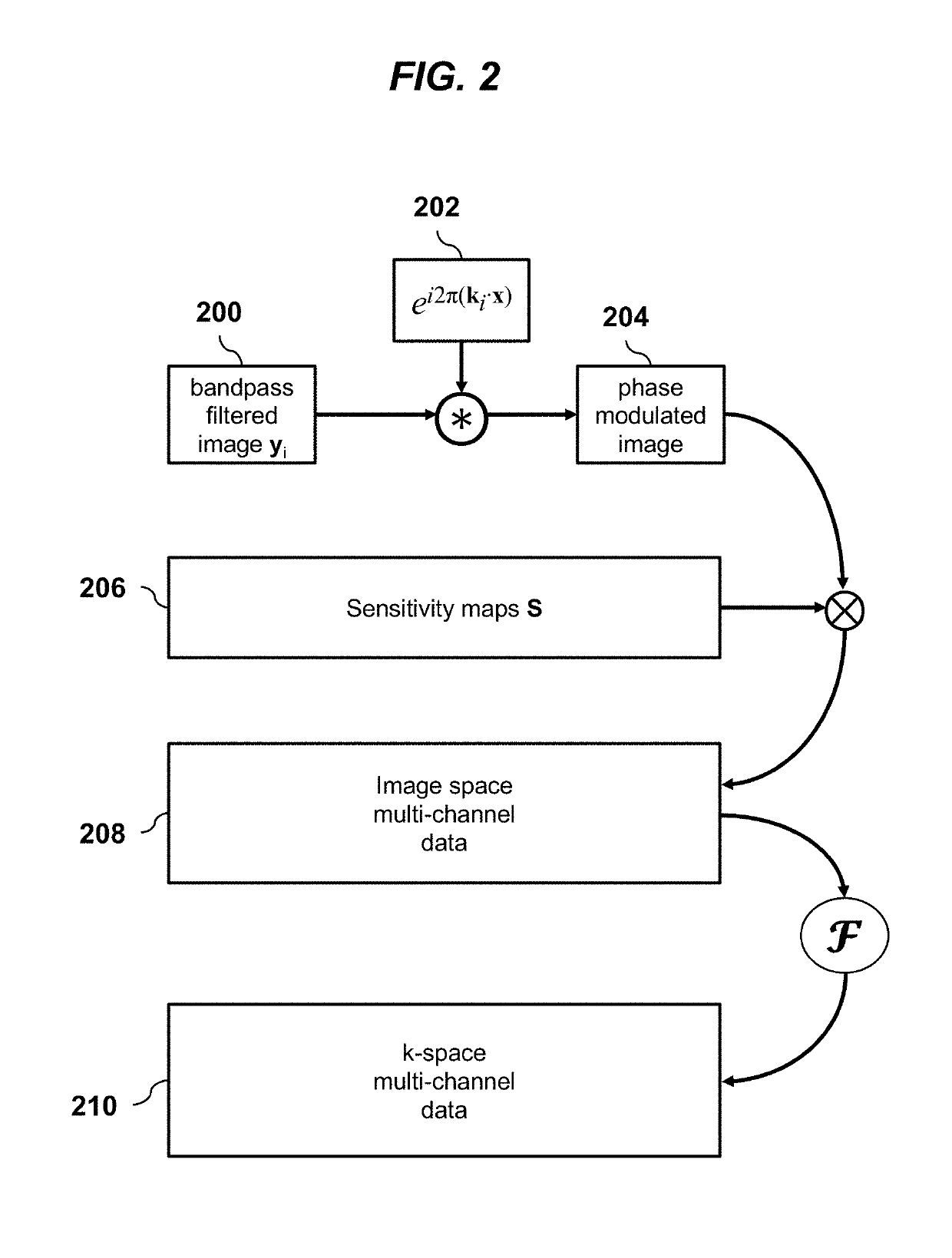Highly-scalable image reconstruction using deep convolutional neural networks with bandpass filtering
a neural network and deep convolution technology, applied in the field of magnetic resonance imaging, can solve the problems of large computational complexity of traditional iterative algorithms, difficult application of convnets, and many of the known techniques for image processing with convnets do not directly apply to mri image reconstruction, etc., to achieve the effect of increasing the flexibility of the network
- Summary
- Abstract
- Description
- Claims
- Application Information
AI Technical Summary
Benefits of technology
Problems solved by technology
Method used
Image
Examples
Embodiment Construction
[0025]According to an embodiment of the invention, training and inference will all be performed on localized patches of k-space. FIG. 1 provides an overview of the method of processing subsampled multi-channel measurement data 100 in the k-space domain. The imaging model A is first estimated 102 by extracting the sensitivity maps 104 of the imaging sensors specific for the input data. This model can be directly applied with the model adjoint Aadj operation 106 to yield a simple image reconstruction 108 with image artifacts from data subsampling. For the reconstruction, a k-space patch 110 of the input data is inserted into a convolution neural network G 112 which also uses the imaging model in the form of sensitivity maps. The output of G is a fully sampled k-space patch 114 for that k-space region. This patch is then inserted into the final k-space output 116. Two example patches are shown in blue and green with the corresponding images overlaid. By applying this network for all k-...
PUM
 Login to View More
Login to View More Abstract
Description
Claims
Application Information
 Login to View More
Login to View More - R&D
- Intellectual Property
- Life Sciences
- Materials
- Tech Scout
- Unparalleled Data Quality
- Higher Quality Content
- 60% Fewer Hallucinations
Browse by: Latest US Patents, China's latest patents, Technical Efficacy Thesaurus, Application Domain, Technology Topic, Popular Technical Reports.
© 2025 PatSnap. All rights reserved.Legal|Privacy policy|Modern Slavery Act Transparency Statement|Sitemap|About US| Contact US: help@patsnap.com



